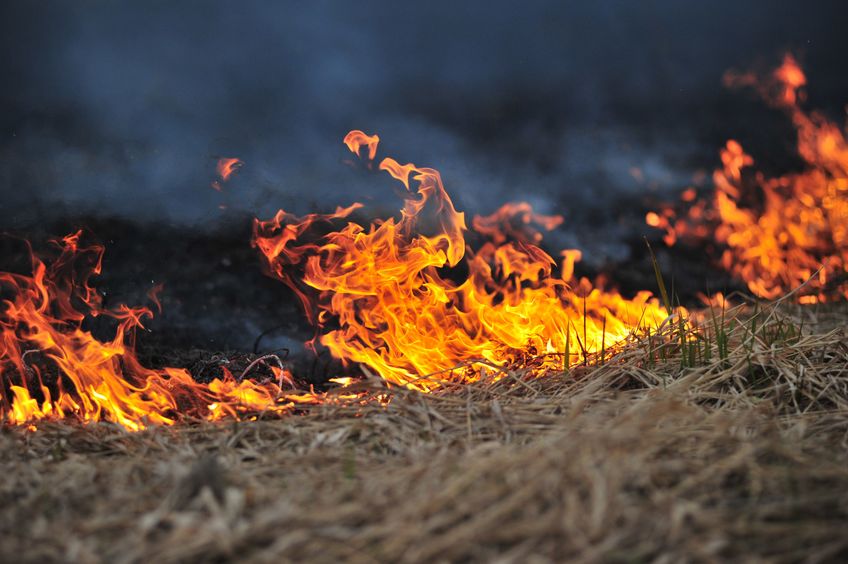
The cost of farm fires in the UK reached a five-year high last year, totalling over £49 million, according to new claims statistics.
Farmers have been urged to check their fire precautions and have emergency plans in place following the release of NFU Mutual's figures.
Electrical faults accounted for over half the total last year, followed by arson which rose by 40 percent to £9 million.
Additional analysis from the insurer indicates that 2020 is on track to see an even higher number of incidents and costs, in a year that saw farmers battle unforgiving weather which led to a poor harvest.
“Farm fires put the lives of people and livestock at risk as well as having a huge emotional and business impact on farmers,” said Andy Manson, Managing Director of NFU Mutual Risk Management Services Ltd (RMS).
"Farmers not only have to be mindful of the usual farm hazards such as electrical equipment, combustible material and fuel but also protect themselves from the alarming rise in arson damage.
"Many farmers are feeling particularly vulnerable this year and with straw in short supply after the poor harvest, more are using remote camera systems linked to mobile phones as well as fencing off straw stacks and farm buildings to discourage arsonists.”
Fires caused by electrical faults totalled £25m last year. Operating in harsh environments, farm electrical systems often get wet, hot or dusty leading to short circuits and cable failures.
RMS is advising farmers to have regular electrical inspections, not to overload power supplies and have enough plug sockets to avoid using multi gangs and other adapters.
Although the number of farm fires last year was at a similar level to 2018 across the UK, the damage was more costly.
The Midlands was the worst-affected region by cost in 2019, totalling £13.2m, followed by the North East of England, with fire claims costs totalling £7.6m, up from £4.7m in 2018.
NFU Mutual’s initial claims figures from January to July 2020 have seen an increase in both incidents and cost, suggesting that 2020 could be heading towards a six-year high.
How can I reduce the risk of fire?
NFU Mutual has offered farmers and landowners tips on how to lower the risk of fires:
Fire prevention:
• Get electrical systems and equipment regularly inspected by a competent electrician
• Don’t overload electrical systems – and avoid using multigang connectors
• Ensure there are sufficient fire extinguishers for the size of buildings and that they are inspected regularly to ensure they are in the right location and condition
• Ensure staff and adult family members know the location of fire extinguishers and how to use them
• Reduce the risk of arson by fencing off straw stacks and farm buildings
• Use CCTV cameras on straw stacks and farm buildings, along with warning signs to deter arsonists
• Store hay and straw away from equipment that could give off heat (e.g. hot vehicle engines, overhead lights) and at least 10m from other buildings
• Put in place an evacuation plan for staff and livestock
• Store petrol, diesel and other fuels in secure areas
• Pre-plan hot works such as welding in clear areas
• Ensure you have safe, designated smoking areas
• Ensure you can direct emergency services to the exact location of fires e.g. download the what3words app which pinpoints specific 3m x 3m locations
• Ask your local Fire and Rescue service to visit to check water supplies and access routes
If a fire breaks out:
• Make sure everyone evacuates the immediate area and remains in a safe location
• Call the Fire and Rescue Service without delay
• If possible, send someone to the farm entrance to direct the Fire and Rescue Service to the fire
• Prepare to evacuate livestock but only if safe to do so should the fire spread
